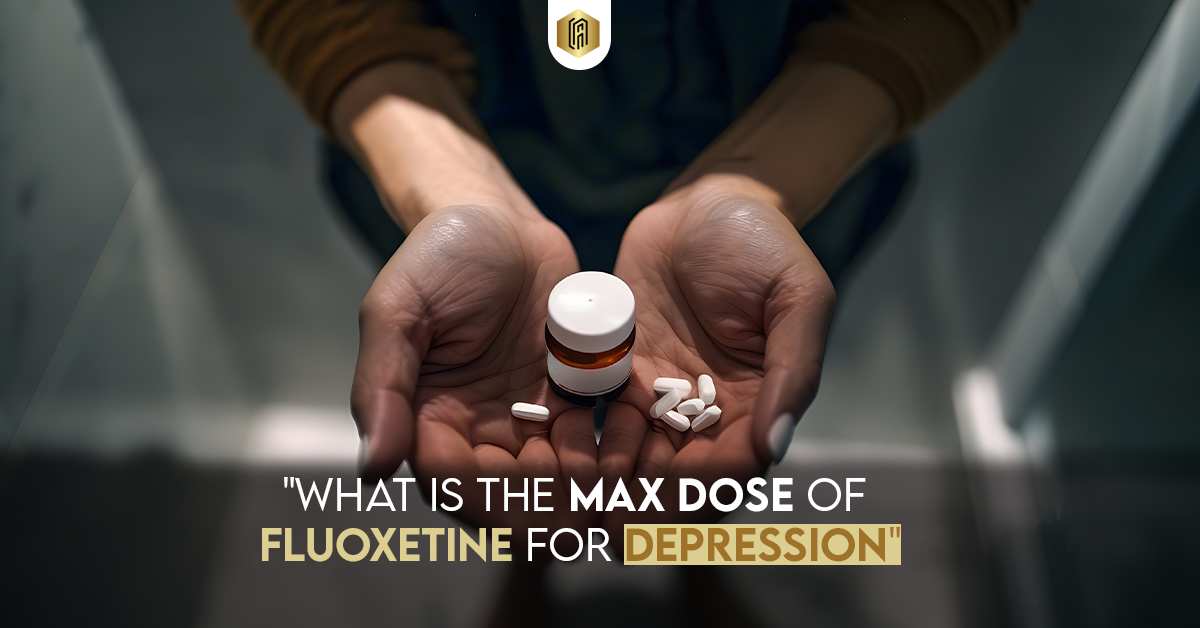Fluoxetine, known as Prozac, is a leading treatment for depression and mental illness. It helps brain chemicals return to their natural balance. It allows people to feel relaxed and gain control over their behaviors. Knowing how drug doses increase is crucial. This is especially important for you or someone you know taking fluoxetine. We will discuss “what is the max dose of fluoxetine for depression”. We will also give information in an easy way.
Ascension Psychiatric Services provides expert guidance on fluoxetine dosage for depression. Contact us today.
What Is the Normal Dose of Fluoxetine?
Doctors begin fluoxetine at roughly 20 mg daily. This usually improves symptoms over time. If progress stalls, the doctor slowly raises the dose.
- The average Prozac dose for adults is 20-40 mg daily.
- “What is a low dose of Prozac?” Prozac can start at 10 mg per day. It is often used when starting the medication or for those sensitive to its effects.
The doctor decides the right dose for each person. He customizes treatments for each individual. Certain patients flourish with a large dose; others excel with less.
What Is the Max Dose of Fluoxetine for Depression?
Adults fighting depression take fluoxetine up to 80 mg each day. Yet, most will find this mighty measure unnecessary. Doses above 60 mg are usually for special cases. They are for when lower amounts don’t work.
For example:
- Some people with very severe depression might benefit from 60 to 80 mg daily.
- Doctors always monitor people on higher doses for side effects.
Always stick to the prescribed dose. Your health is very important. Too much fluoxetine causes serious side effects. So, prioritize your safety. This approach ensures a smoother path to wellness.
Can Prozac Be Taken Every Other Day?
Absolutely, there are instances when doctors advise taking Prozac every other day. This tends to occur when:
- A patient feels particularly sensitive to the medication and can skip a day.
- Medication is reduced to avoid withdrawal.
Your doctor determines whether taking Prozac every other day is wise.
Prozac Dosage for Older Adults
When recommending Prozac to senior citizens over age 65, care is essential. They may process medication slowly, so a smaller dose is safer. Physicians often begin with a gentle 10 mg daily or even less.
Here are a few key points about Prozac and elderly patients:
- The doctor may tweak the dose slowly, based on your response.
- Older adults face heightened side effects, leading to lower fluoxetine dosages.
Why Does Fluoxetine Dosage Vary?
Finding the ideal antidepressant dosage is a balancing act influenced by key factors:
- Severity of Symptoms: When depression hits hard, a higher dose may be essential.
- Age: Children and elderly people usually take lower doses than adults.
- Weight and Size: A smaller person might not need as much as a larger person.
- Response to the Medicine: Some people feel better quickly on low doses, while others might need more to see improvements.
Doctors meticulously monitor each patient’s condition, fine-tuning doses for optimal care. They adjust with precision, ensuring that treatment is always just right.
Signs of Fluoxetine Overdose
Exceeding the recommended dose of fluoxetine for depression can be perilous. Whether accidental or intentional, a high dose can trigger troubling symptoms. Beware of the signs that may arise:
- Feeling very tired or confused.
- Fast heartbeats.
- Nausea or throwing up.
- Dizziness or shaking.
- Seizures (in extreme cases).
If someone overdoses on Prozac, act fast. Call emergency services for help right away. Their safety depends on it. Time is crucial.
How Long Does Fluoxetine Take to Work?
Fluoxetine is not effective immediately. Most people will feel better only after 4 to 6 weeks. There are those who see small changes earlier; for example, they sleep better or feel less sad. Follow the treatment as prescribed. Don’t stop it if you see no effect at once.
Is Fluoxetine Safe for Long-Term Use?
Fluoxetine, similar to other drugs, is taken for a long time. Doctors often give it for chronic depression, anxiety, or OCD. Some people may use Prozac for months or even years. In most cases, their doctor will propose keeping the treatment. It works if side effects are mild. But continuous appointments are vital. They reassess their option.
Common Side Effects of Fluoxetine
Some people have a rough start with fluoxetine. Initially, side effects may rear their heads, but worry not; they often fade with time. Common companions on this path include:
• Feeling very tired or confused.
• Fast heartbeats.
• Nausea or throwing up.
• Dizziness or shaking.
• Seizures (in extreme cases).
If side effects last or are bothersome, inform your doctor. Good health starts with open communication.
Final Thoughts: What Is the Max Dose of Fluoxetine for Depression?
Fluoxetine is used to treat depression. When used correctly, it works wonders.
- Typically, individuals take 20 to 40 mg of Prozac each day.
- Though rare, some may reach 80 mg for severe cases.
- Doctors often prescribe lower doses for children, seniors, or beginners.
- With a doctor’s guidance, some may opt for every other day dosing.
Consistently adhere to your doctor’s instructions precisely. Never tweak your dosage solo; keep your doctor in the loop about any worries. Prozac, at the right dose, can be a guiding light. It may turn the shadows of depression into a more hopeful life.
FAQs
What’s the lowest dose of Prozac?
A gentle start with Prozac usually begins at 10 mg a day. This dose suits beginners and those sensitive to medication. It helps create a smoother path to feeling better.
Can Prozac be taken every other day?
Indeed, in certain scenarios, doctors might recommend a Prozac every-other-day dance. This could be when you’re easing off the medication or striving to soften side effects.
What’s the highest dose of Prozac?
Prozac can go up to 80 mg a day. This high dose is for rare cases where lower doses don’t work. It’s a vital option for tough situations, making sure all patients get the care they need.






No comment